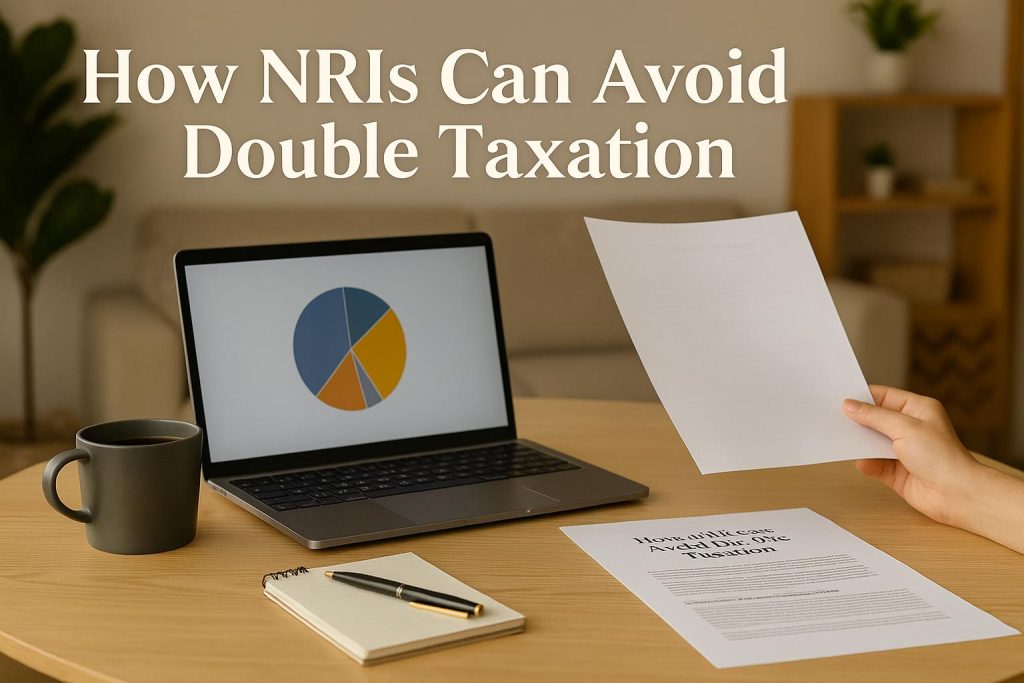
Main Takeaway:
Non-Resident Indians (NRIs) can minimize or eliminate double taxation on the same income through India’s network of Double Taxation Avoidance Agreements (DTAAs), legal relief methods (exemption, tax credit, unilateral relief), and compliance with specific filing requirements (TRC, Form 10F). Effective tax planning and early application for treaty benefits are key to optimizing after-tax returns in INR.
1. Understanding Double Taxation for NRIs
Double taxation occurs when the same income is taxable in two jurisdictions:
- Source country: Where the income arises (India).
- Residence country: Where the individual resides (e.g., USA, UK, UAE).
An NRI earning interest, dividends, salary, rental income, or capital gains in India may face tax liability in both India and their country of residence if relief is not claimed under DTAA or unilateral provisions of the Income Tax Act.
2. Defining Tax Residency Status
Tax liability in India hinges on the individual’s residential status under Section 6 of the Income Tax Act, 1961:
- Resident and ordinarily resident (ROR): Global income taxable in India.
- Resident but not ordinarily resident (RNOR): Indian income taxable; foreign income taxed only if remitted to India.
- Non-resident Indian (NRI): Only income earned or received in India is taxable in India.[1]
Most NRIs, by definition, spend fewer than 182 days in India during a financial year and therefore fall into the NRI category, limiting their Indian tax liability to India-sourced income.
3. Double Taxation Avoidance Agreements (DTAAs)
India has DTAA treaties with over 94 countries, providing two primary relief methods under Sections 90 and 90A of the Income Tax Act:
[2]
- Exemption Method
- Income taxed in one country is exempt in the other.
- Common for salaries, business profits, or pensions under specific treaties.
- Tax Credit Method
- Tax paid in the source country is credited against tax liability in the residence country.
- Ensures the higher of the two tax rates applies, not both.
3.1 Unilateral Relief (Section 91)
Where no DTAA exists, Section 91 offers
unilateral relief:
- Claim credit for foreign taxes paid up to the lower of the Indian tax rate or the foreign tax rate on the same income.[2]
4. Types of Income Covered
DTAA provisions commonly address these income categories:
- Salary earned in India or abroad.
- Interest from NRE/FCNR accounts and foreign deposits.
- Dividends from Indian companies.
- Capital gains on property or securities.
- Fees for technical services, royalties, and professional income.
Each treaty specifies the percentage rates and eligible incomes—e.g., under the India–US DTAA, interest income faces a 15% withholding rate instead of 30%.
[3]
5. Step-by-Step Guide to Claiming Relief
- Determine Residential Status
- Verify NRI status by days of presence and residential criteria under Section 6.
- Obtain Tax Residency Certificate (TRC)
- Secure an official TRC from the tax authority of your country of residence.
- File Form 10F
- Submit Form 10F with your Income Tax Return (ITR) to claim DTAA benefits.
- Calculate Indian Tax Liability
- Compute tax on India-sourced income under the applicable slab or treaty rate.
- Claim Exemption or Credit
- Under exemption, exclude treaty-specified incomes from taxable total.
- Under credit, offset Indian liability by foreign tax paid (convert foreign tax to INR at TTBR on payment date).[4]
- Report and Disclose
- In the ITR, disclose gross income, TDS certificates (Form 16A), and proof of foreign tax paid.
- Maintain Documentation
- Preserve TRC, Form 10F, TDS certificates, bank statements, and foreign tax payment proofs.
6. Worked Examples
| Scenario |
Indian Tax (INR) |
Foreign Tax (INR) |
Relief Method |
Final Tax Payable (INR) |
| Salary ₹10,00,000; 20% tax in country |
2,00,000 |
2,00,000 |
Tax Credit |
0 |
| Dividend ₹5,00,000; 15% India; 25% US |
75,000 |
1,25,000 |
Exemption/Reduced Rate |
75,000 |
| Capital gains ₹3,00,000; no DTAA |
90,000 (30%) |
75,000 (25%) |
Unilateral Relief Sec 91 |
15,000 |
All taxes are illustrative and converted to INR.
7. Common Pitfalls and How to Avoid Them
- Missed TRC/Form 10F: Without these, DTAA benefits are denied.
- Incorrect Currency Conversion: Always use the TTBR on payment/deduction date.
- Non-Disclosure of Income: All India-sourced income must be reported, even if exempt.
- Treaty Shopping: Improper use of treaty benefits involving third countries can attract penalties.
8. Proactive Tax Planning Strategies
- Use NRE/FCNR Accounts: Interest earned is exempt under most DTAAs.
- Invest in Tax-Efficient Instruments: Choose assets (e.g., specified mutual funds) with favorable treaty provisions.
- Annual Residency Review: Regularly confirm days of stay to maintain NRI status.
- Professional Consultation: Engage cross-border tax experts to interpret treaty nuances.
9. Frequently Asked Questions (FAQs)
Q1: Is DTAA exemption automatic?
A1: No—NRIs must apply by filing TRC and Form 10F with ITR to avail exemptions under DTAA.
Q2: Can an NRI avoid TDS on interest?
A2: Yes, by submitting TRC and Form 15G/Form 15H with the bank, subject to treaty provisions.
Q3: What if foreign tax paid exceeds Indian liability?
A3: Excess foreign tax cannot be refunded by India; only the Indian liability amount is credited.
Q4: Are agricultural incomes covered?
A4: Agricultural income is tax-exempt in India and generally not considered for DTAA relief.
Q5: How often must I renew TRC?
A5: TRCs are typically valid for one financial year; renew annually to claim benefits.
Conclusion:
By leveraging India’s DTAAs, adhering to relief methods (exemption, credit, unilateral), and fulfilling documentation requirements (TRC, Form 10F), NRIs can significantly reduce or eliminate double taxation on India-sourced income. Proactive planning and informed compliance ensure optimal after-tax returns in INR.




